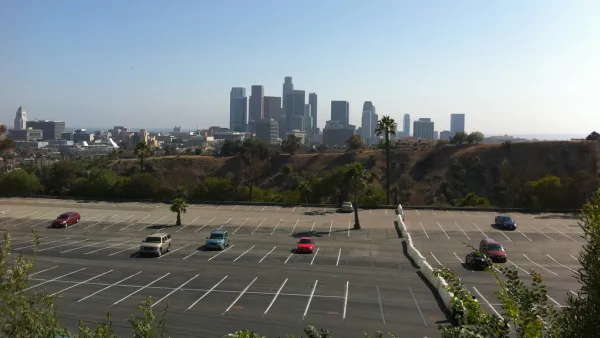An editorial in the Los Angeles Times praises the Cornfield Arroyo Seco Specific Plan as a model for how the city can break free of outdated zoning laws that force residents into obsolete living, working and commuting patterns.
After more than a decade of trying to "turn neglected neighborhoods and underused industrial properties next to the former Southern Pacific rail yard north of downtown — known as the Cornfield — into a collection of new urban zones," the Cornfield Arroyo Seco Specific Plan moved one step closer to passage this week with the approval of the City Council's planning committee.
As Los Angeles embarks on a long-overdue update to its 1946 zoning code, the Times points to the "smart land use model" and its four zoning types as worthy of emulating city-wide.
"There is a greenway zone, oriented toward enhancing the river as the neighborhood's frontyard. There is an urban village zone, focused on housing and other residential use, with some ground-floor retail. There is a denser urban center zone, close to rail stations, geared for job-creating uses but with residential space included. And there is an urban innovation zone, with flexible space geared toward anything from artists' studios to light manufacturing."
"The market has for years been demanding just those types of development in Los Angeles, and builders have been trying to respond — but have been getting stuck in variance hearings, lawsuits and community protests, development by development."
"The new zones and the new specific plan cut through that process. They bring that rarest of commodities to the Los Angeles land-use process: certainty."
FULL STORY: A model for L.A. planning

National Parks Layoffs Will Cause Communities to Lose Billions
Thousands of essential park workers were laid off this week, just before the busy spring break season.

Retro-silient?: America’s First “Eco-burb,” The Woodlands Turns 50
A master-planned community north of Houston offers lessons on green infrastructure and resilient design, but falls short of its founder’s lofty affordability and walkability goals.

Delivering for America Plan Will Downgrade Mail Service in at Least 49.5 Percent of Zip Codes
Republican and Democrat lawmakers criticize the plan for its disproportionate negative impact on rural communities.

Test News Post 1
This is a summary

Test News Headline 46
Test for the image on the front page.

Balancing Bombs and Butterflies: How the National Guard Protects a Rare Species
The National Guard at Fort Indiantown Gap uses GIS technology and land management strategies to balance military training with conservation efforts, ensuring the survival of the rare eastern regal fritillary butterfly.
Urban Design for Planners 1: Software Tools
This six-course series explores essential urban design concepts using open source software and equips planners with the tools they need to participate fully in the urban design process.
Planning for Universal Design
Learn the tools for implementing Universal Design in planning regulations.
EMC Planning Group, Inc.
Planetizen
Planetizen
Mpact (formerly Rail~Volution)
Great Falls Development Authority, Inc.
HUDs Office of Policy Development and Research
NYU Wagner Graduate School of Public Service



























